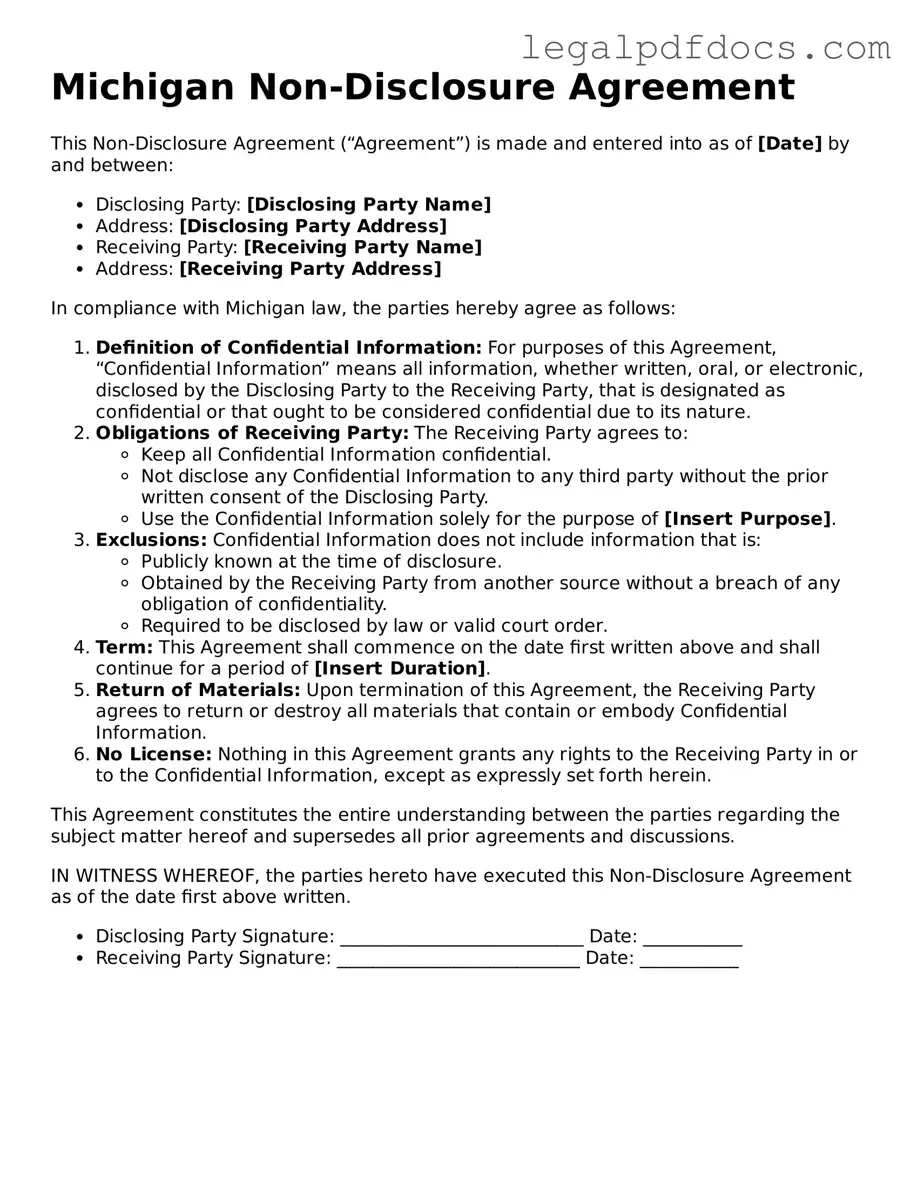Official Non-disclosure Agreement Form for Michigan
A Michigan Non-disclosure Agreement (NDA) is a legal document designed to protect confidential information shared between parties. This agreement ensures that sensitive information remains private and is not disclosed to unauthorized individuals. If you need to safeguard your business secrets, consider filling out the NDA form by clicking the button below.
Open Non-disclosure Agreement Editor Here
